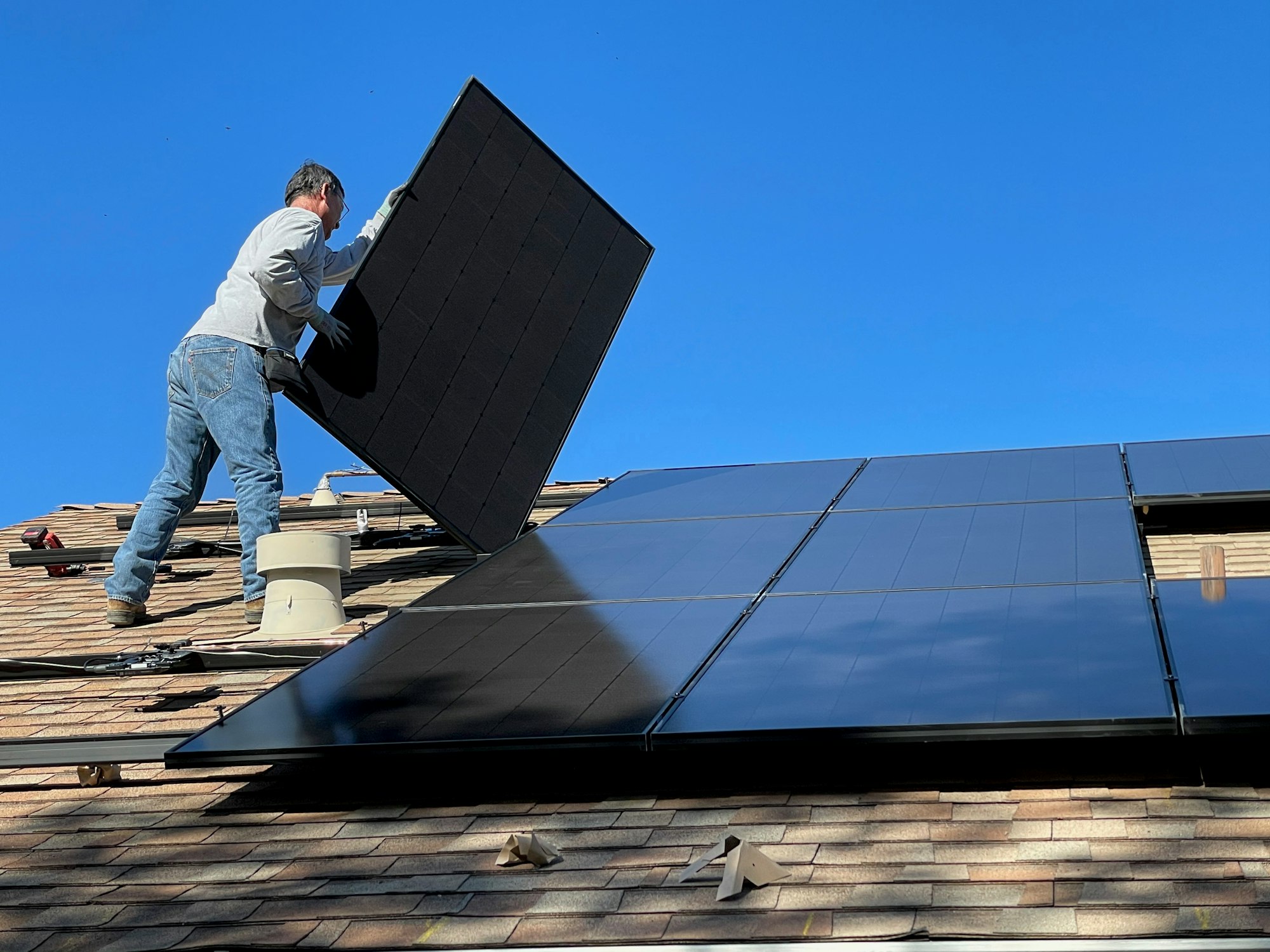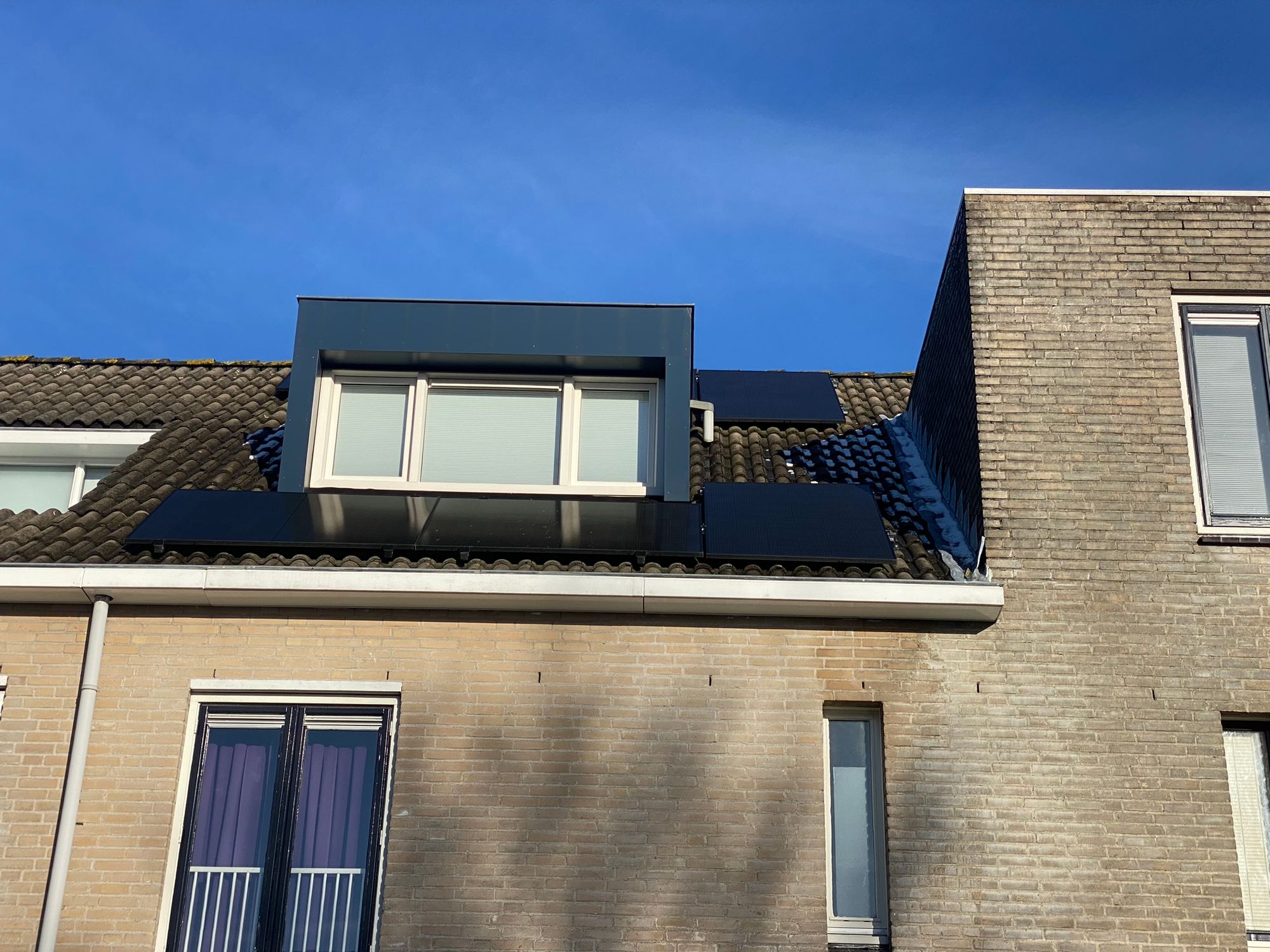A retrospective on getting solar panels installed
A retrospective on getting solar panels installed. The installation cost around 5k€ (4k€ after government subsidies), and we were able to generate over 80% of our yearly consumption and save just short of 1k€ in year 1 as well as shave off our CO2 footprint by over a ton

As you may know, we're trying many ways to reduce our impact on the environment as a family. For example, we didn't fly for several years, focussing instead on vacations that are easier to reach. We're also growing part of our own food organically, making a lot of our own products and almost exclusively using public transport.
A year ago now, we got solar panels installed on our roof and it's time for a small retrospective.
TL;DR : The installation cost around 5€ (4k€ after government subsidies), and we were able to generate over 80% of our yearly consumption (used 30% straight up) and save just short of 1k€ in year 1.
First, our consumption
In this post, we'll only be talking about electricity. Our house heating (and warm water) is done using hot water pipes from the city, so it won't be part of the equation here.
As you may know already, the first thing to do if you are trying to lower your impact on the environment is not to recycle, but to start by reducing your consumption. Yup, it all starts by reducing.

We leave in a 100m2 house that is connected on both sides. We do not own an electric car, and we have two kids. In 2022, our yearly consumption was just above 3000kWh. If I believe the data from our energy contractor, our monthly consumption is about 45% smaller than similar families, which is kind of nice. (If you're interested btw, the average American household consumed 10,632-kilowatt hours (kWh) of electricity last year 😓😱) .

This is all done without many sacrifices btw, we're just using mostly "dumb" appliances and avoiding to run the dryer, for example.
The experience, and the setup
Interested to further see how to reduce our house's footprint, we invited Energie N at home, a group of volunteers who comes and tells you based on your house installation which optimizations are the most impactful. (If you're searching for help by the way, I recommend checking for similar groups in your area. They have lots of experience visiting many houses and it's been extremely helpful).
For example, I learnt that dry air is cheaper to heat that humid air. Which is very logical if you think about it, but I never had before 🤓.
Based on their recommendations, we decided to look into installing solar panels on our house. Solar panels are extremely common in the Netherlands (more than 25% of households have them now!!) so there's a plethora of companies to choose from. They do everything online, using cadaster and aerial imagery to plan your future installation. Here is our part of the contract looked for us, without them even having to come

Now, I have to say that not everything is flawless with those methods. As you can see, the space we have to install those panels is limited because of the roof extension we have in our bedroom. There's also legal requirements for margins on each side of your roof to avoid taking space off of your neighbor's roof. The first contractor who came over realized that there was a 5cm discrepancy between his plans and our actual roof and had to cancel the installation...
We contracted a second company, who back then had a 16 months waiting time (due to the war in Ukraine and the energy prices exploding)! Luckily, a few weeks later another customer cancelled their installation date in our street and we could get them installed very fast.
The whole installation took less than 3 hours, and was flawless. Super happy with our contractor.

A year later, the results
We're now a year later. Let's have a look at the results!
We do not have batteries in our installation. The way it works in the Netherlands at the moment, is that the energy you generate is either used direction by your house, or sent back to the grid. The energy you send back to the grid is removed from your bill on a 1/1 ratio.
Last year, our 6 panels generated a total of 2393kWh. The cool thing is that you really can see we had a very sunny spring, but a crap summer 😅. I'm curious how it'll compare to next year.

Out of this energy, we sent almost 1600kWh back to the grid.

This means we used directly just over 30%, or 800kWh. If the conditions of energy delivery were to change, it might actually be worth installing batteries, because it seems that we sent back over two thirds of what we generated.
After all this, our leftover usage is 2226 - 1591 = 635kWh, which means we generated almost 80% of our total consumption! In terms of financials, we saved just shy of 1k€ this year, meaning that I'd expect our installation to be profitable within the next 4 years if all goes well.
However, if we

And in terms of CO2 emissions?
This will be a very rough calculation here, because I'm not including the cost of the solar panels manufacturing, and the values I will be giving change all the time, but overall if we look at the numbers :
On a normal day, 1kWh generates roughly 500g of CO2 (In 2023 the average emissions of Netherlands were 421 g CO2eq/kWh.). Meaning that us generating 2393kWh this year leads to a reduction of 1150kg of our CO2 footprint, 400kg of which we didn't even send back to the grid. Not bad, that's almost 10% of our combined footprint!

Next steps and conclusion
Overall, I'm super happy about the whole setup. We're reducing our footprint, while saving money, raising the value of the house and for absolutely no trouble. Hard to do better.
I think we've about done what we could for energy production in the household. I think the next big thing for us will revolve around insulation, looking at getting better windows and more. I'll post about this another time!
Hope you liked this post, maybe it can motivate you too!